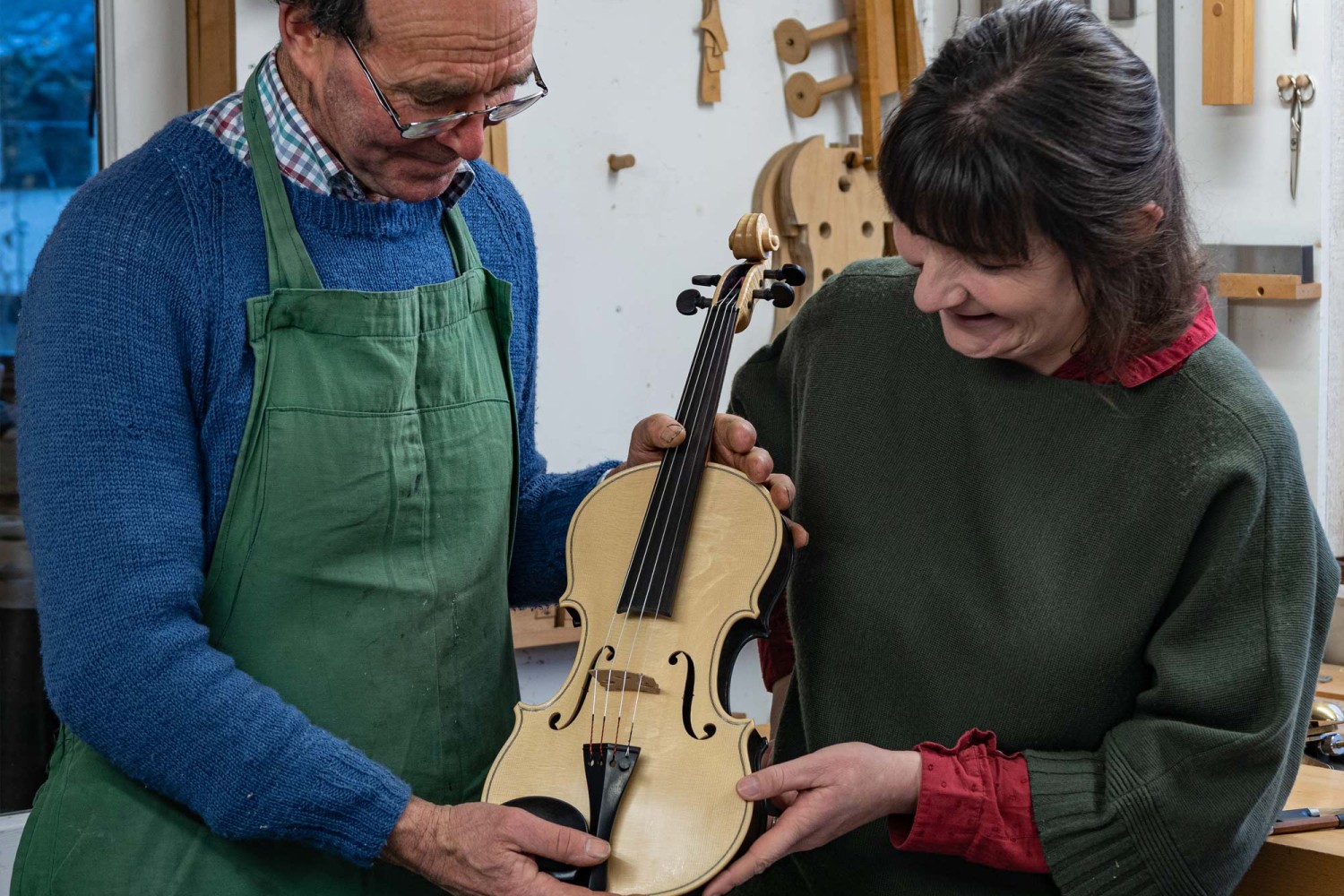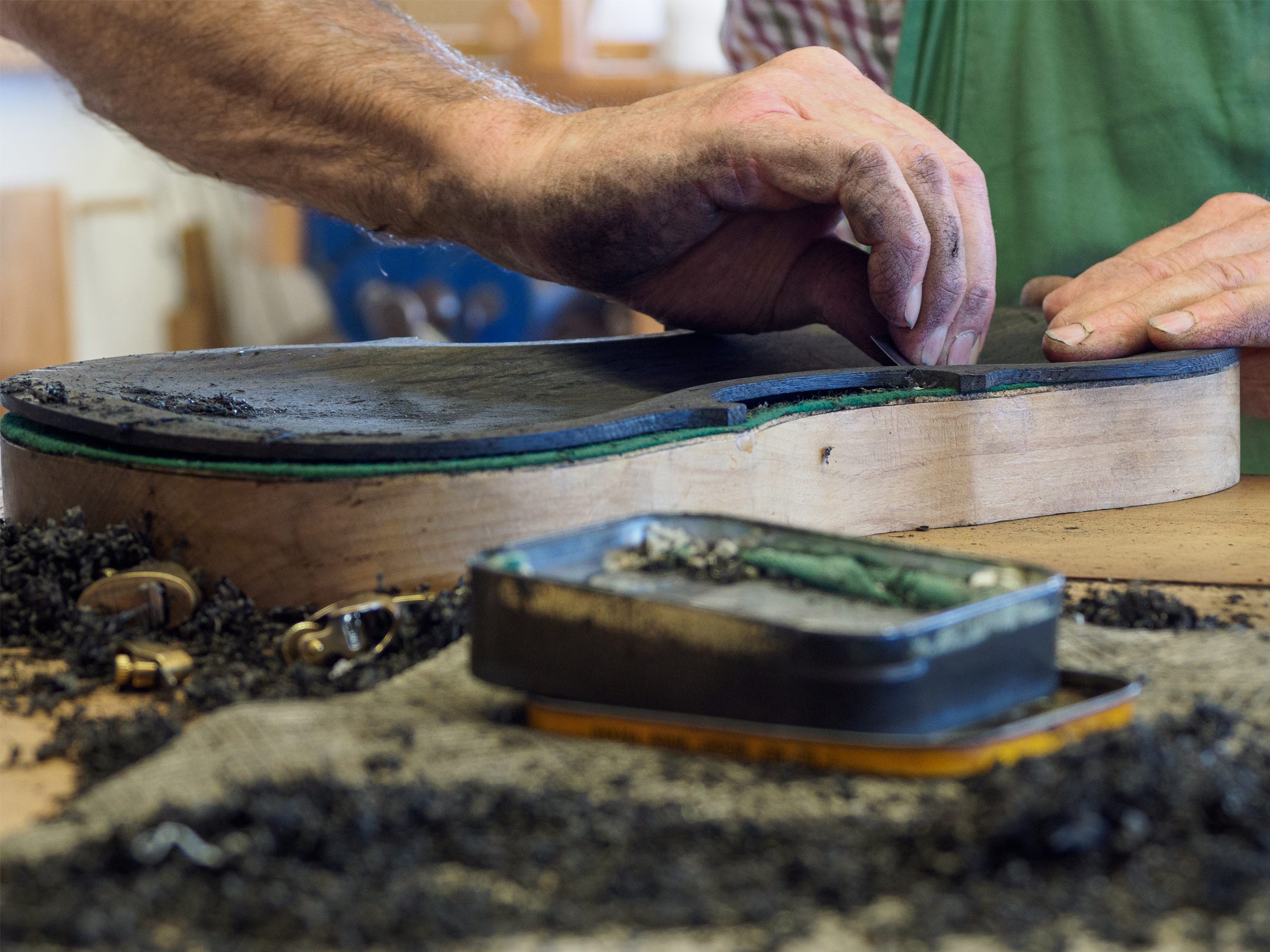
5,000 years in the making
Exquisitely crafted and beautifully played, the Black Oak Violin is a unique musical masterpiece. Nigel Housden details its story and significance…
Just over a year ago, under the Octagonal ‘Lantern Tower’ of The Ship of the Fens (Ely Cathedral), a stunning ancient oak table had been placed, temporarily cloaked in a large cloth. Assembled guests sat expectantly within the historic nave, waiting for a unique unveiling. Carefully positioned on the table was the Black Oak Violin, set to be played at this inaugural public airing.
Around 5,000 years ago the Fenland basin was a forested region of huge straight oak trees; by no means resembling the pedunculate oaks found in Norfolk’s woods and resplendent hedgerows today. The massive trees died in waterlogged conditions following a rise in sea levels, which caused the rivers to back up and flood their fenland habitat. Crashing down into the silt of the forest floor, the oaks were consumed, submerged and consequently preserved in perfect anaerobic conditions.
The resurrection of what was to become the Jubilee Oak of 2012 began in March of that year when an astonishing giant black oak was revealed during farming operations. Exhumed from a location just 17 miles away from Ely Cathedral, it was considered too important to be cut into manageable lengths due to its size and magnificence. The only solution was to saw in situ. To do so the longest sawmill in the country was brought onsite, requiring two tele-handlers to undertake the sawing operation. As well as the table wood selected from the giant oak, a separate piece was reserved for the component elements of a violin.
A Norfolk based violin maker, Philip Taylor, was contacted and agreed to create the world’s first (and currently only) black oak violin. Making the instrument was to break new ground, where the ribs, back and pegs would be made from the bog oak, the neck and scroll maple and the front spruce. As an established expert in the craft and repair of stringed instruments, Philip had an understanding of how the oak would resonate; he knew structuring the thickness of the ribs and back would be a trial and error process. Amidst the history of violin making, hardly any references relate to oak being used - the rare instances do not mention the back, which is the violin’s sound board. Always prepared to push the boundaries, Philip is not quite the normal luthier; he’s certainly not programmed by the tradition or mystique surrounding accepted violin making materials, principles or processes.
Immediately work began, but a problem arose during preparation of the ribs and violin back. A vast amount of black carbon dust emanated from the ancient oak as it was fashioned to the required dimensions. This permeated the work bench and ingrained hands with a potential to stain the light cream colour of the spruce front and maple neck. Commenting at the time, Philip said: “At the end of the day my hands were coated with the black dust. Once the violin was finished, the workbench used for the bog oak had to be resurfaced.” The risk of cross contamination was alleviated by segregating the work required on the differing woods, along with regular hand washing. Once the ribs and back were completed, they were assembled and sealed to prevent any future risk of black dust impregnation.
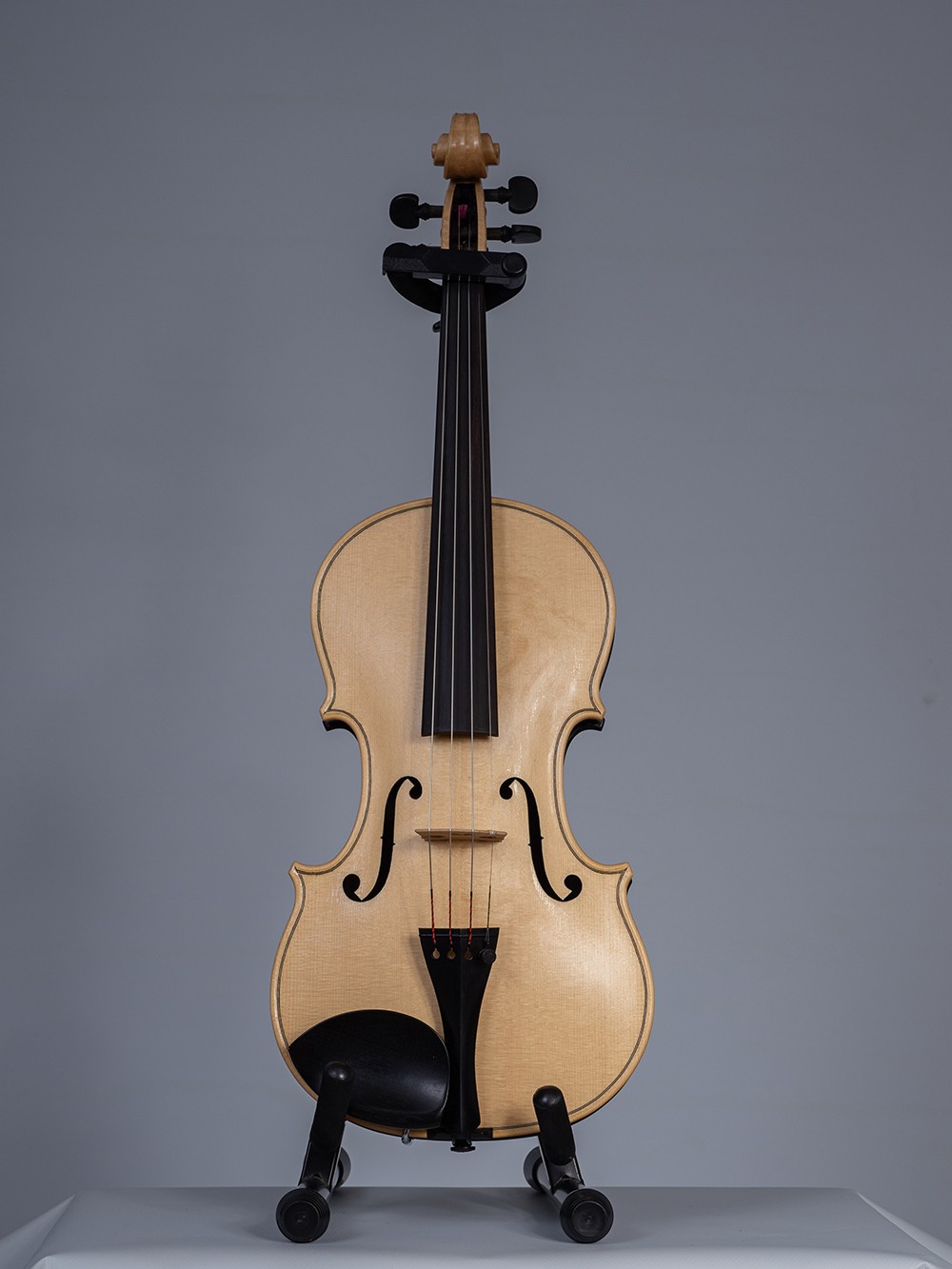
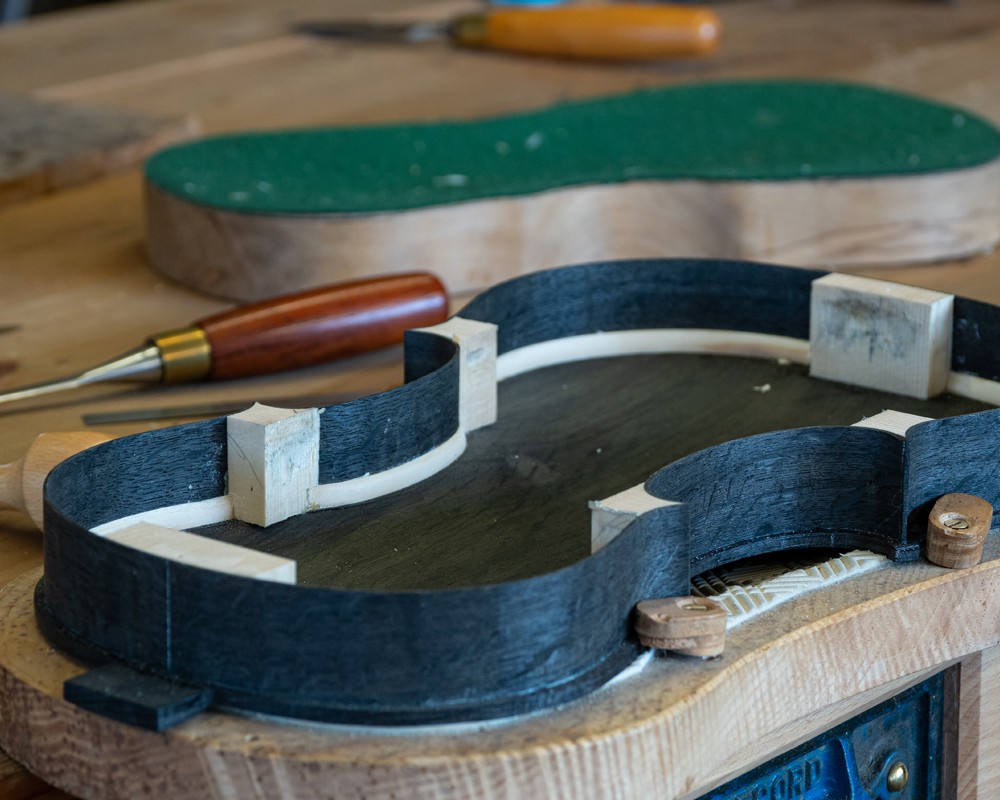
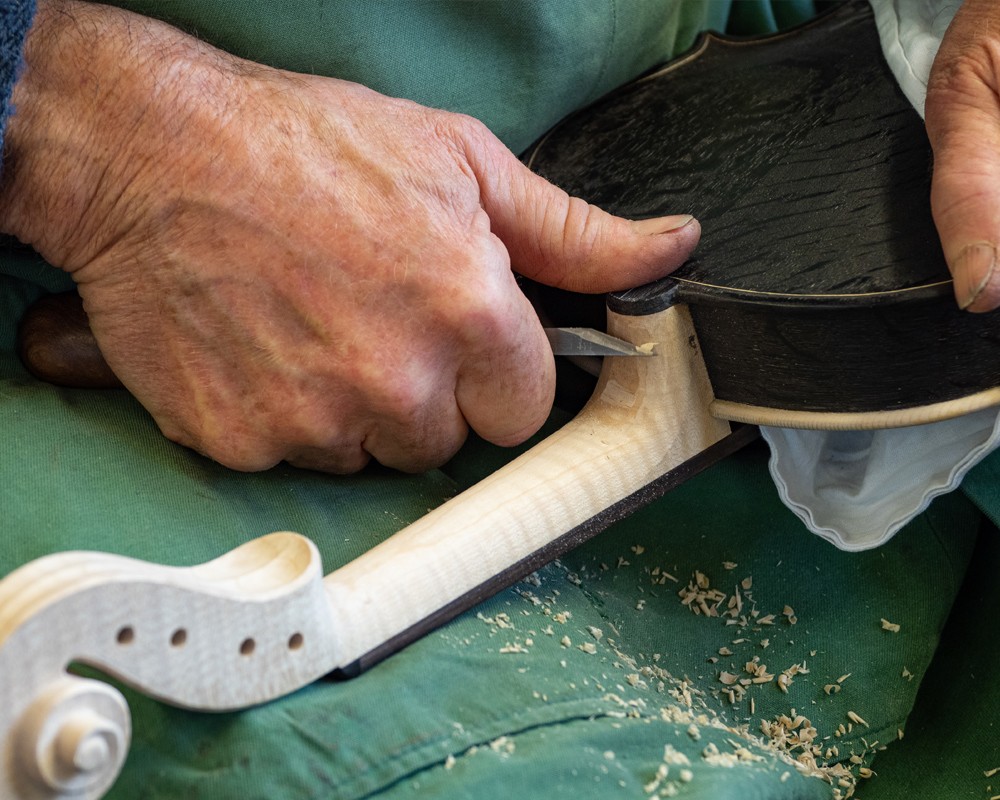
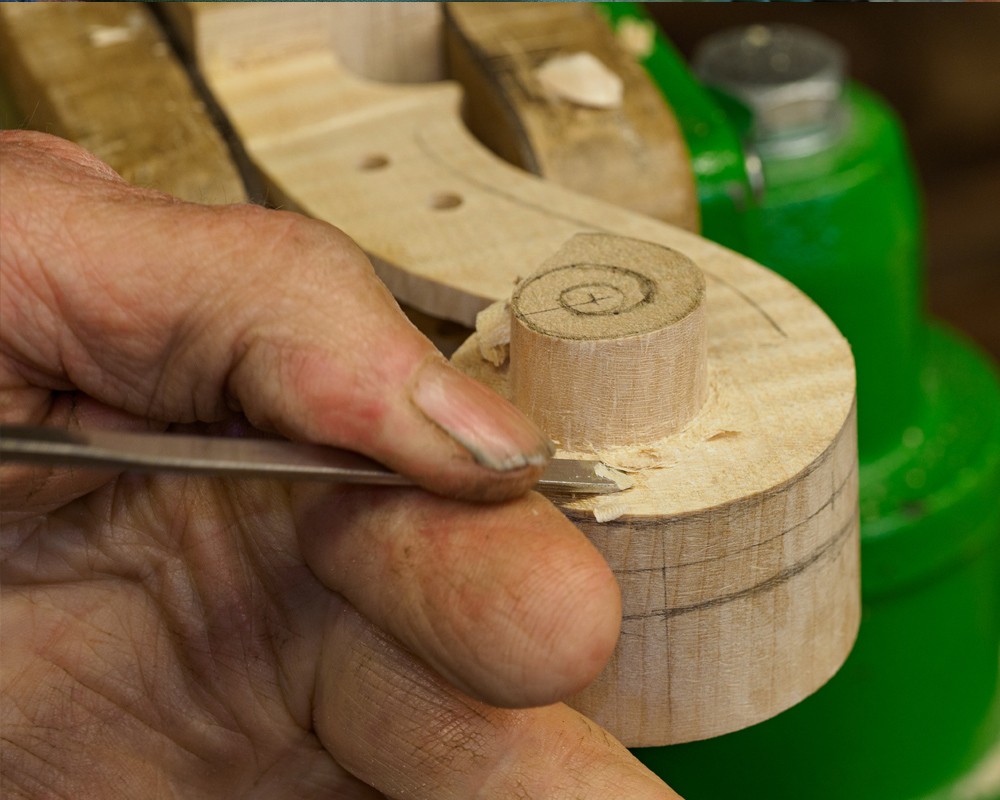
Work then focussed on the front, neck and scroll, all requiring the same fine attention to detail. With the striking instrument assembled, varnished and left to dry, an air of palpable excitement hung in Philip’s workshop. However, this joy was balanced by a note of trepidation as the day arrived for the very first playing of the violin. It was a moment that could turn out to be despair or sublime satisfaction, for there was no means to gauge how the resonance of the black bog oak would react to a violin bow stroking the finely tuned strings.
The moment of truth came on 19th December 2021, following those many weeks of patient work and dedication. From Bach to English jigs, the violin’s delightful debut brought tears to Philip’s eyes and became one of his finest pre-Christmas presents.
There were tears amongst audience members in Ely Cathedral when the melody of Bach’s D minor Partita for Solo Violin swept through the nave, gently clothing the historic stone interior. “I was very concerned how the violin would project in the vastness of Ely Cathedral compared to my tiny workshop,” says Philip. “But, under the Lantern Tower, the expressive beauty of the violin’s expansive resonance was so moving that it left me emotionally bereft of words”.
The experience was equally captivating for professional musician Elizabeth Housden, who proudly played the exquisite instrument at its unveiling. “The violin spoke for itself as I drew the bow across the ‘A’ string before the hushed audience,” she says. “It responded with absolute clarity to every stroke and each musical phrase. The Black Oak Violin is not only unique in the quality of the tone it produces, it is a standalone instrument of significant character and beauty”.
The Black Oak Violin is the only one of its kind in the world, born in part when Ely was just an island in a watery landscape of decaying, submerged oak trees. This visually stunning masterpiece spans the eons and exudes supreme craftsmanship and musical resonance beyond any bounds of time.
